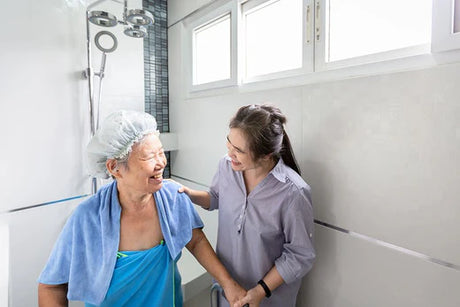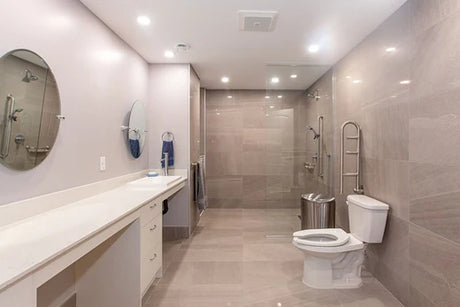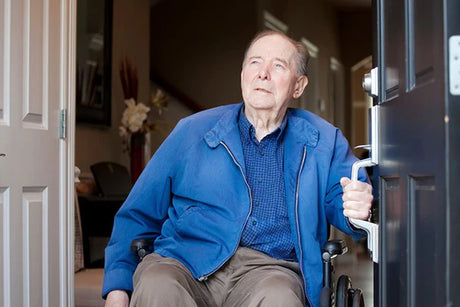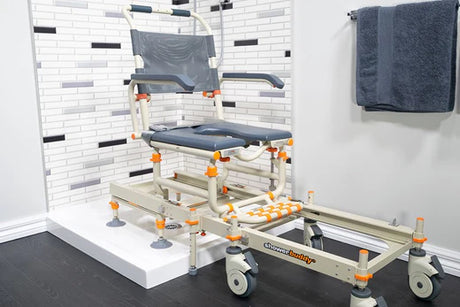With that said, in this article we’re going to shine a light on some of the most common of these hazards in the bathroom.
1. Slippery tiles
There are a number of ways to mitigate the risks of slippery tiles including anti-slip mats, grab bars and even simple bath mats. But beyond preventative measures like this, the household should get into the habit of wiping the floor with a towel after use, and keeping windows open and extractor fans going.
For someone with serious mobility challenges such as someone in a wheelchair, it may be worth exploring a full bathroom mobility system like Showerbuddy which takes care of the transfers into and out of the shower, onto the toilet and to wash up, all in a comfortable seated position. This sort of system is designed to be sturdy in a slippery environment giving peace of mind to both the individual sitting down and the support person.
2. Jagged or hard edges
Hard edges and slip risks are obviously a dangerous combination so being mindful of these and addressing them as much as possible is going to help keep the bathroom a safe environment for everyone.
3. Loose toilet seat
Some free-standing toilet risers on the market will allow a more comfortable approach and sitting position but not provide much else. A Showerbuddy chair will provide excellent toilet use support but will also be used for bathing inside a shower or bathtub and moving around the bathroom generally – all without leaving the chair.

4. Bathtub slips
A wet bathtub can create slips on the edge where users steady themselves to enter. The floor of the bathtub during usage can also commonly create slips if the floor of the tub has not been properly designed to mitigate this.
Anti-slip options are really important for any bathtub, regardless of your level of mobility. Falls inside the bathtub can lead to really nasty injuries such as colliding with fixtures or inadvertently knocking the temperature control high (another reason why it’s a good idea to get a plumber to ensure the maximum shower temperature is safe). You also don’t want to have an ineffective anti-slip mat that itself becomes a tripping hazard.
Again, for someone with considerable mobility challenges, it’s better to explore purpose built assistive technology that removes these slip hazards entirely, such as our SB2 and SB2T range built to transfer in and out of a bathtub, and using it – all without touching the bathtub itself.
5. Cords and electricity
Further reading
Enjoyed this article? You may be interested in these resources online:
- The dangers of manual bath transfers for a disabled person – Showerbuddy blog
- The 4 Most Surprising Bathroom Hazards for the Elderly – Homewatch Caregivers
- Bathrooms Top The List For Fall Hazards: How To Make Them Safer – Rehab Select














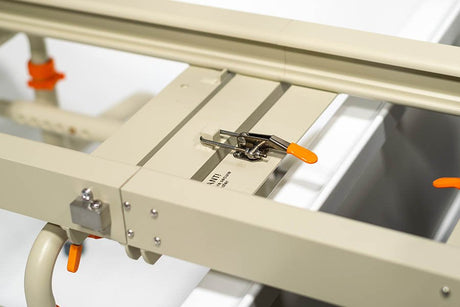











![Toilet Training A Young Child With Mobility Challenges [And How A Shower Chair Can Help]](http://shower-buddy.com/cdn/shop/articles/toilet-training-disabled-child_520x500_a90e5234-d372-435d-aa56-8da15dd3836c.webp?v=1722557239&width=460)







